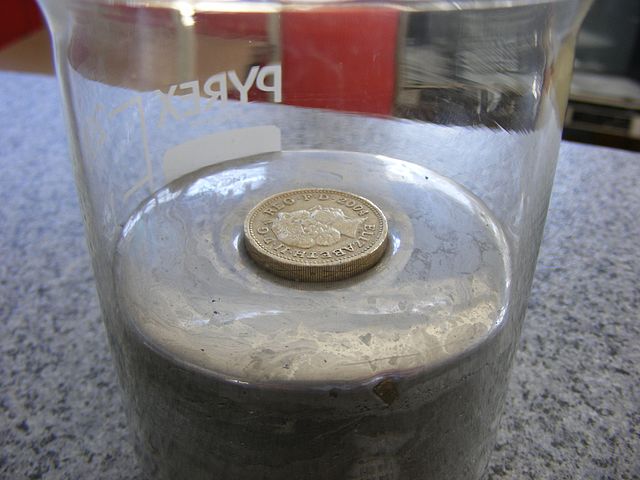A sphygmomanometer, also known as a blood pressure monitor, or blood pressure gauge, is a device used to measure blood pressure, composed of an inflatable cuff to collapse and then release the artery under the cuff in a controlled manner, and a mercury or aneroid manometer to measure the pressure. Manual sphygmomanometers are used with a stethoscope when using the auscultatory technique.
BP 138/73 mmHg as result on electronic sphygmomanometer
Aneroid sphygmomanometer with an adult cuff
Aneroid sphygmomanometer dial, bulb, and air valve
Clinical mercury manometer
Mercury is a chemical element; it has symbol Hg and atomic number 80. It is also known as quicksilver and was formerly named hydrargyrum from the Greek words hydor (water) and argyros (silver). A heavy, silvery d-block element, mercury is the only metallic element that is known to be liquid at standard temperature and pressure; the only other element that is liquid under these conditions is the halogen bromine, though metals such as caesium, gallium, and rubidium melt just above room temperature.
Mercury (element)
An old pound coin (density ~7.6 g/cm3) floats on mercury due to the combination of the buoyant force and surface tension.
Mercury-discharge spectral calibration lamp
Native mercury with cinnabar, Socrates mine, Sonoma County, California. Cinnabar sometimes alters to native mercury in the oxidized zone of mercury deposits.








